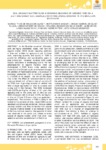Por favor, use este identificador para citar o enlazar este ítem:
http://www.alice.cnptia.embrapa.br/alice/handle/doc/984168Registro completo de metadatos
| Campo DC | Valor | Lengua/Idioma |
|---|---|---|
| dc.contributor.author | CARVALHO, M. T. de M. | pt_BR |
| dc.contributor.author | MADARI, B. E. | pt_BR |
| dc.contributor.author | LEAL, W. G. de O. | pt_BR |
| dc.contributor.author | SOUZA, D. M. de | pt_BR |
| dc.contributor.author | SOLER, M. A. da S. | pt_BR |
| dc.contributor.author | MAIA, A. de H. N. | pt_BR |
| dc.contributor.author | PETTER, F. A. | pt_BR |
| dc.contributor.author | MEDEIROS, J. C. | pt_BR |
| dc.date.accessioned | 2014-04-08T11:11:11Z | pt_BR |
| dc.date.available | 2014-04-08T11:11:11Z | pt_BR |
| dc.date.created | 2014-04-08 | pt_BR |
| dc.date.issued | 2013 | pt_BR |
| dc.identifier.citation | In: ENCONTRO BRASILEIRO DE SUBSTÂNCIAS HÚMICAS, 10., 2013, Santo Antônio de Goiás. Matéria orgânica e qualidade ambiental: anais. Brasília, DF: Embrapa, 2013. | pt_BR |
| dc.identifier.isbn | 978-85-7035-241-5 | pt_BR |
| dc.identifier.uri | http://www.alice.cnptia.embrapa.br/alice/handle/doc/984168 | pt_BR |
| dc.description | In the Brazilian savannah (Cerrado), soils are highly weathered, acidic, with low soil organic matter (SOM) levels, requiring additions of lime and fertiliser for agricultural use. In these soils, improving quantity and quality of SOM is pivotal for efficiency and sustainability gains in crop production. However, building SOM under tropical conditions is challenging due to the fast decomposition of organic material. Here we investigated if SOM levels under aerobic rice systems in the Cerrado could be enhanced through the addition of hardwood biochar, a by-product of bioenergy production rich in resilient, pyrogenic C (70-80% of its weight). The aim of this study was to test the effect of hardwood biochar (char) rates combined with different rates of synthetic N on SOM over 4 growing seasons of aerobic rice after a single application of char to a sandy and a clay soil in the Cerrado. The SOM increased with 0.07% per Mg ha-1 of char, at 0.1 year after applying char to the sandy soil. In the clay soil, SOM increased with 0.26 and 0.23% per Mg ha-1 of char at 2.5 and 3.5 years after char application, respectively. The increase in SOM is likely to be related to the porosity of char, where SOM can be absorbed and physically protected. Residue added via crop rotation was likely to be the main source of organic material related to an increase in SOM in the clay soil over seasons, the opposite of what was observed in the sandy soil, where no extra source of organic matter, other than char, was added to soil after establishment of field trial. | pt_BR |
| dc.language.iso | eng | eng |
| dc.rights | openAccess | eng |
| dc.title | Soil organic matter over 4 growing seasons of aerobic rice on a clay and sandy soil amended with hardwood biochar in the brazilian savannah. | pt_BR |
| dc.type | Artigo em anais e proceedings | pt_BR |
| dc.date.updated | 2014-04-08T11:11:11Z | pt_BR |
| dc.subject.thesagro | Arroz | pt_BR |
| dc.subject.thesagro | Oryza sativa | pt_BR |
| dc.subject.thesagro | Solo | pt_BR |
| dc.subject.thesagro | Matéria orgânica | pt_BR |
| dc.subject.thesagro | Cerrado | pt_BR |
| dc.subject.nalthesaurus | biochar | pt_BR |
| dc.format.extent2 | p. 317-320. | pt_BR |
| riaa.ainfo.id | 984168 | pt_BR |
| riaa.ainfo.lastupdate | 2014-04-08 | pt_BR |
| dc.contributor.institution | MARCIA THAIS DE MELO CARVALHO, CNPAF; BEATA EMOKE MADARI, CNPAF; WESLEY GABRIEL DE OLIVEIRA LEAL, CNPAF; DIEGO MENDES DE SOUZA, CNPAF; MELLISSA ANANIAS SOLER DA SILVA, CNPAF; ALINE DE HOLANDA NUNES MAIA, CNPMA; FABIANO ANDRÉ PETTER, UFMT; JOÃO CARLOS MEDEIROS, pós-doutorado CNPAF. | pt_BR |
| Aparece en las colecciones: | Artigo em anais de congresso (CNPAF)  | |
Ficheros en este ítem:
| Fichero | Descripción | Tamaño | Formato | |
|---|---|---|---|---|
| p317.pdf | 2.61 MB | Adobe PDF |  Visualizar/Abrir |









